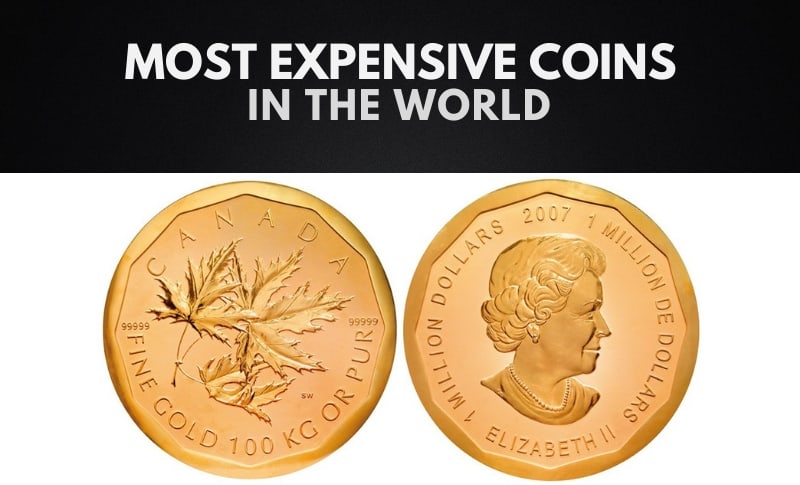Foreign coins are some of the most expensive items out there. There are a few reasons for this. Foreign coins are often made of more valuable materials than their domestic counterparts, they may be rarer, or they may have been minted in special circumstances.
Foreign coins are some of the most expensive items in a collector’s inventory. Coins from countries such as China, Russia, and Mexico are all popular choices for collectors. Some common foreign coins worth a high amount include Chinese yuan, Russian rubles, and Mexican pesos.
In the world of currency, there are a few coins that command a high price on the secondary market. These are often referred to as “collectible” coins.
Here are 5 of the most expensive foreign coins in circulation today
1. British Royal Mint Gold Sovereign (50 pence) – $30,000
The Gold Sovereign is the official coin of the United Kingdom. It is one of the oldest coins in circulation and has been produced by the Royal Mint since 1817.
The sovereign was designed by Sir Isaac Newton and it features a portrait of Queen Victoria on one side and an image of St. George and the dragon on the other. It is worth an estimated $30,000 today – so it’s definitely a collectible.
The British Royal Mint is the only mint in the world that produces gold sovereigns. Since 1817, it has produced coins for various countries around the world. While the Royal Mint Gold Sovereign is not the most valuable coin in circulation, it certainly is one of the most expensive.
The Royal Mint Gold Sovereign weighs almost 13.5 grams (1/24 oz) and measures 31 millimeters (1.25 inches) across its widest point.
The Gold Sovereign is the oldest coin in circulation, having been first minted in 1797. It took almost two years for the Royal Mint to produce enough gold sovereigns to satisfy demand. Proof Gold Sovereigns The Royal Mint has produced proof gold sovereigns since 1937.
These coins have a very unique and beautiful finish, but they are not as rare as the bullion version. In fact, they are even more common than the bullion version. The Royal Mint Gold Sovereign Proof is struck in 90% gold and 10% silver.
The design of the coin is the same as the bullion version, but it has a distinctive finish. This finish is called frosted relief. The obverse of the coin is the same as the bullion version, except that instead of Queen Elizabeth II’s portrait, it has a coronet.
The reverse is also the same as the bullion version, but with a small mark on either side of the center. The obverse is normally struck with a clear crystal coating.
The reverse is usually struck with an iridescent coating, although some may be struck with a frosted finish. Silver coins are usually struck with a mirror finish, while gold coins may be struck with a frosted or frosted-mirror finish.
This coin was issued as legal tender until 31 December 2007. Its legal tender status was removed on 31 December 2009.
The coin’s reverse is the same as the bullion version, except that it is inscribed with a Hindi legend replacing the English.
The word “Pradhan” is a compound of two words: “Pradh” means “leader”, and “han” means “of the people”. In this case, it means that the person who has been selected as the leader of the nation.
The word “Rajya” means “of the state”.
The obverse of the coin has a right-facing portrait of the first President of India, Dr. Rajendra Prasad, to whom it is dedicated.
The year 2006 is inscribed above his head. The coin has a diameter of 26.5 mm and a weight of 5 grams. The bullion version has a diameter of 26.4 mm and a weight of 4 grams.
The bullion version of the coin is gold-plated. The reverse side of the coin has a split ring to attach it to a pendant necklace.
Each year, the reverse side bears an inscription in Hindi and English. The obverse side of the coin bears an image of Dr. Rajendra Prasad.
The reverse side of the coin bears an image of the Shivalinga, a symbol of Hinduism. The Shivalinga is placed in front of the Parliament House.
2. Russian Federation Silver Ruble (10 rubles) – $18,000
3. Austrian Silver Philharmonic Coin (10 schillings) – $16,000
4. German Federal Republic East German 1-Deutsche Mark (1 DM) – $15,000
5. Gold Australian Sovereign (10 oz) – $10,000
Other Most Expensive Foreign Coins: Greece, China, Switzerland, Norway and Sweden
With the exception of Norway, all of the countries on this list are located in Europe. Some of the most expensive foreign coins are:
Greece (at $82.06), China (at $60.15), Switzerland (at $53.89), Norway (at $44.40) and Sweden (at $41.26). The United States is the only country represented on the list that is not located in Europe, with the dollar being the most expensive foreign currency at $1.29 per coin.
The high prices of foreign coins can be attributed to a variety of factors, including their rarity, their history and their location.
For example, some countries mint their own coins while others use coins from other nations as a base currency.
Additionally, some countries have more valuable coins than others due to economic factors such as inflation rates or GDP growth rates.
In a Reuters article, economist Mark Weisbrot noted that “the Swiss franc was the most expensive, followed by the Danish krone, with the Australian dollar and Canadian dollar just behind at the bottom.”
Conclusion: Why are these coins so expensive?
The most expensive foreign coins are those made of gold or silver. The most expensive gold coin is the Australian Gold Nugget, which is worth $1,000 per ounce.
The most expensive gold coins are those made of .999 fine gold. This means that the gold content has been reduced to 99. The most expensive silver coin is the Swiss Silver Franc, which is worth $29 per ounce.
